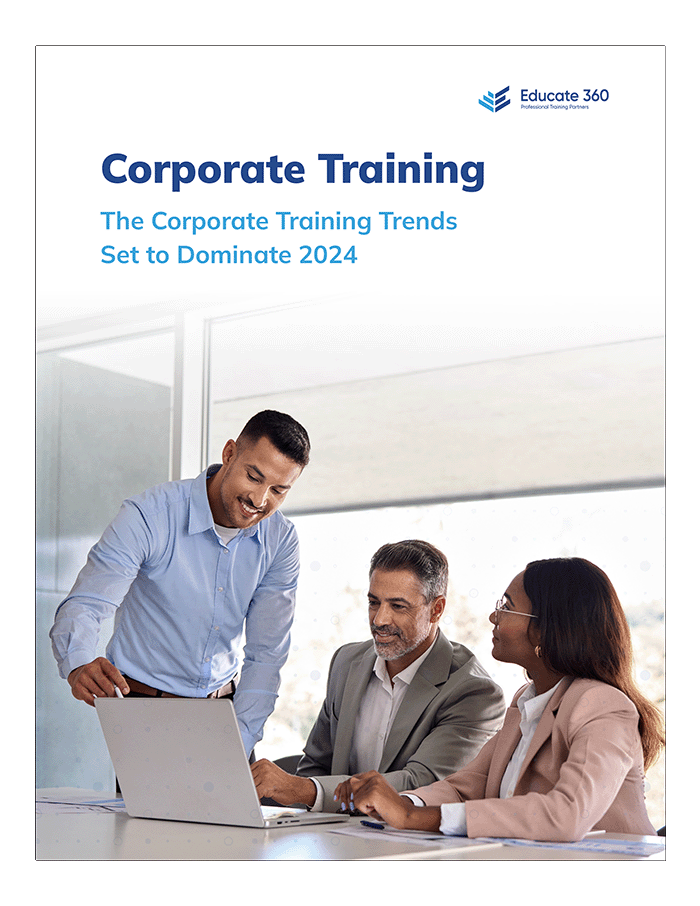Employee retention refers to a business or organization’s capability to hire and keep top talent. The issue for many companies is that focusing on employee retention can be challenging—especially when the impact of a solid or weak retention program on day-to-day responsibilities may not be evident to those at the top. Even so, retaining top talent is critical and requires you, as the boss, to be tuned in to your employees’ work needs and how they can grow in their careers, as well as how you can develop a good work environment.

Discover the Top Training Trends for 2024
Stay ahead with the latest trends and strategies in corporate training.
How Retaining Top Talent Benefits Your Company
Retaining top talent benefits your company in several ways. You will experience increased employee loyalty, see decreases in hiring and onboarding costs, and develop a highly skilled workforce over time. Additionally, a positive company culture, a motivated staff, and a solid return on your investment in human capital are all advantages of retaining top talent in your company.
8 Best Practices for Retaining Top Talent
1. Recruiting
Hiring the right people for the right roles is step one. Consider what functions your company needs to fill and use the job description to detail the expectations and qualifications required for someone to be successful in the role. That way, there are no surprises for job candidates and new hires. When new hires have realistic expectations about what they have signed on to do, they are more likely to stay with the company.
2. Career Expectations
Informing the job candidates or new employees about career opportunities and expectations with the company within the first few weeks is essential. To hire and retain top talent, you must:
- Define what you need from a candidate
- Consider the qualifications for the position
- Specify those job qualifications
- State minimum required qualifications
- Apply the criteria to all applicants in a systematic way
- Expand the candidate pool
- Evaluate each candidate individually
- Think about how a new hire’s career growth can help your company
3. Candidates Who’ll Stay on the Course
When hiring people, you will want to look for signs that candidates will stay with your company. Consider whether their previous work experience shows longevity in their former employment. In a contract or freelance role, however, the length of any employee’s work may vary.
For freelancers or contractors, the quality of their work matters, not the length of time they stay with a contract or employer. Another indicator of how long they will stay is if they are active in volunteer work or other activities such as sports. Hiring employees who demonstrate teamwork through other activities can give you an idea of how they will fit into your corporate culture. A strong indicator of the talent you recruit is their interest in your company and company culture. To retain top talent, you need people who are enthusiastic about your company and its values.
4. Ongoing Education and Clear Paths to Advancement
To retain talent, you must supply ongoing education and clear paths to advancement. Provide professional and career development opportunities focused on each employee. You should provide individualized assessments and continuous coaching feedback. You should understand your employees’ strengths, risk factors, and motivators for individual goals.
5. Remote Work Options
Where possible, offer flexibility in work arrangements. Remote work can allow your employees to better balance their personal and professional goals and obligations. It also gives them some autonomy and the ability to make independent decisions. When you trust your employees to make good decisions with their time, they are motivated to work harder and more efficiently.
6. Competitive Compensation Packages
To retain top talent, you need to be competitive with compensation packages. Research the job market to know the average wage ranges for each role, then determine if you are meeting job candidate expectations. You need to align the wage range to the candidate’s experience. Candidates with higher levels of education and experience will look for higher compensation rates than those with less experience. You can also consider a variable pay program to pay for above-average performance. Additional factors that should be mentioned in benefits discussions include health insurance, flextime, and paid time off for compensation. It is also essential to have a consistent policy on raises.
7. Regular Check-Ins
Employee feedback is best when it is a two-way process. Address problems and acknowledge successes as soon as they occur. Consistent feedback helps prevent issues from getting out of hand, and acknowledging successes helps keep your employees motivated. Make weekly, monthly, or quarterly feedback a routine. Regular feedback and consistent communication support projects staying on track.
8. Discuss “Performance,” Not the “Person”
Constructive feedback should address the employee’s performance and not the employee’s personality. Personality conflicts can exist, but do your best to focus on the problems related to the employee’s actions. For example, someone constantly interrupting meetings should be reminded to respect others’ ideas. Give feedback in a neutral tone, not a mean and hurtful manner. Always treat your employees with respect.
Working to retain top talent is necessary for any business. With the benefits of empowered teams and employees, excellent customer service benchmarks, a reputation as a company that values its employees, and a higher return on investment into human capital, your effort to retain top talent are worthwhile.




